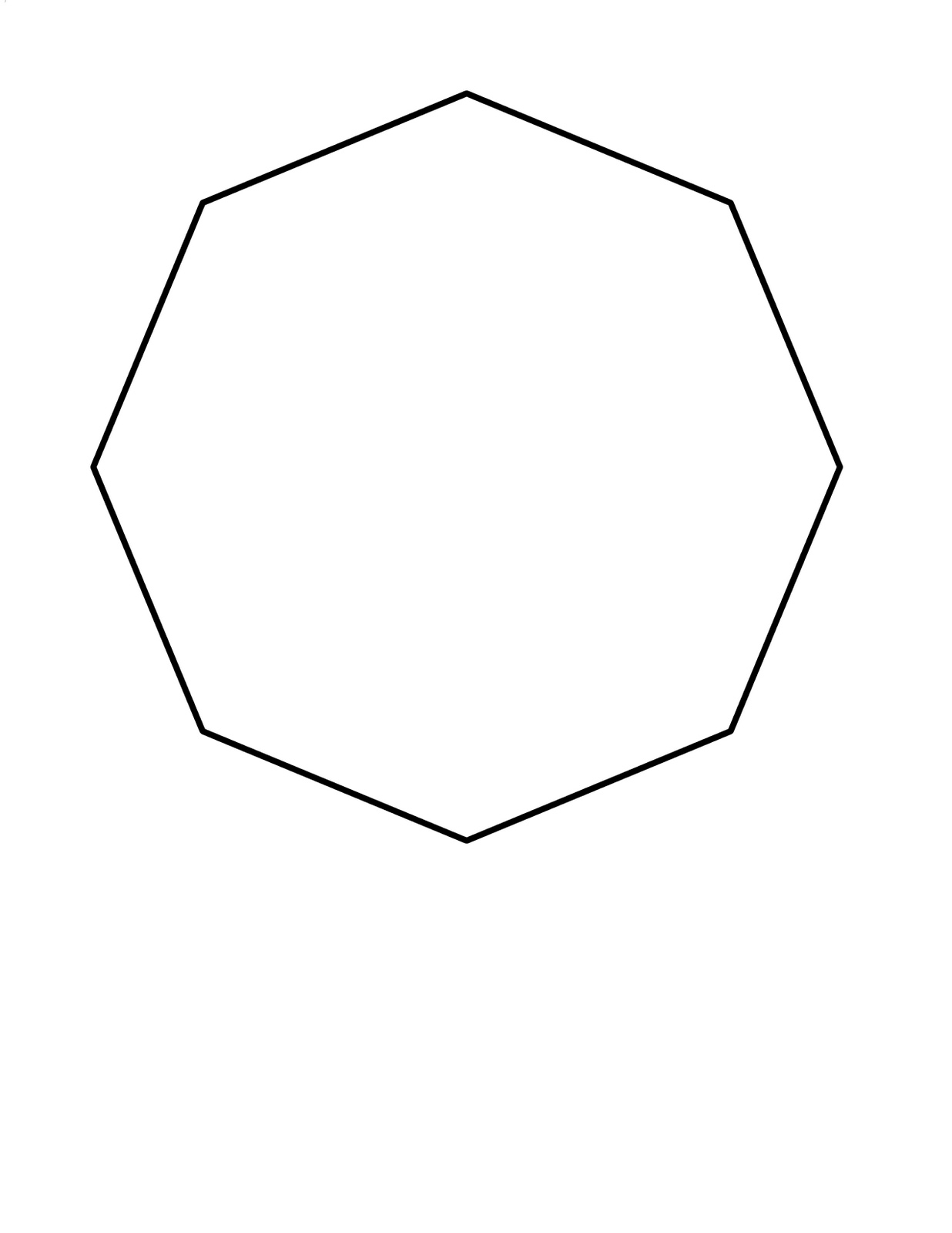Understanding The 8-Sided Shape: A Comprehensive Guide
The 8-sided shape, also known as an octagon, is a fascinating geometric figure that is often encountered in various aspects of life, from architecture to art. In this article, we will delve into the characteristics, types, and applications of octagons, providing you with a thorough understanding of this unique shape. By the end, you will have a clear grasp of what makes the octagon special and how it is utilized in different fields.
Octagons are not just simple polygons; they hold significant importance in mathematics, design, and everyday life. Understanding the properties of octagons can enhance our appreciation for the geometry around us. Whether you are a student, a teacher, or simply a curious individual, this guide will serve as a valuable resource.
In this comprehensive article, we will explore the definition of octagons, their mathematical properties, various types, and real-world applications. We aim to provide expert insights while ensuring the information is accessible and engaging for all readers.
Table of Contents
- 1. Definition of an Octagon
- 2. Properties of an Octagon
- 3. Types of Octagons
- 4. Geometry of Octagons
- 5. Real-World Applications of Octagons
- 6. Octagons in Architecture
- 7. Octagons in Art and Design
- 8. Conclusion
1. Definition of an Octagon
An octagon is defined as a polygon with eight sides and eight angles. The term "octagon" is derived from the Greek words "okto," meaning eight, and "gonia," meaning angle. The most common type of octagon is the regular octagon, where all sides and angles are equal. However, octagons can also be irregular, with varying side lengths and angle measures.
In geometry, the octagon is classified as a convex polygon, meaning that all its interior angles are less than 180 degrees. Regular octagons have an interior angle of 135 degrees, while the exterior angles measure 45 degrees. These properties make octagons stable and aesthetically pleasing shapes.
2. Properties of an Octagon
Understanding the properties of an octagon is crucial for various applications in mathematics and design. Here are some key properties:
- Number of Sides: An octagon has eight sides.
- Interior Angles: The sum of the interior angles of an octagon is 1080 degrees.
- Exterior Angles: The sum of the exterior angles of any polygon is always 360 degrees.
- Symmetry: A regular octagon has eight lines of symmetry and rotational symmetry of order 8.
- Area and Perimeter: The formulas for calculating the area (A) and perimeter (P) of a regular octagon are:
Area: A = 2(1 + √2)s²
Perimeter: P = 8s
3. Types of Octagons
Octagons can be categorized into several types based on their properties:
3.1 Regular Octagon
A regular octagon has all sides of equal length and all angles equal to 135 degrees. This type of octagon is often seen in stop signs and various architectural designs.
3.2 Irregular Octagon
An irregular octagon has sides and angles of different lengths and measures. This type is less common but can be found in artistic designs and certain architectural elements.
3.3 Concave Octagon
A concave octagon has at least one interior angle greater than 180 degrees, causing it to "cave in" at that vertex. This type is less common and often appears in abstract designs.
3.4 Convex Octagon
A convex octagon has all interior angles less than 180 degrees. This is the most common type of octagon.
4. Geometry of Octagons
The geometry of octagons is rich and complex. Here are some important geometric aspects:
- Diagonals: A regular octagon has 20 diagonals.
- Vertices: An octagon has eight vertices.
- Inscribed Circle: A regular octagon can be inscribed in a circle, with all vertices touching the circumference.
- Circumscribed Circle: A circle can also be drawn around a regular octagon, touching all sides.
5. Real-World Applications of Octagons
Octagons are prevalent in various fields, including:
- Traffic Signs: The most recognizable use of octagons is in stop signs.
- Architecture: Many buildings incorporate octagonal designs for aesthetic and structural purposes.
- Art and Design: Octagons are often used in patterns and motifs in various art forms.
6. Octagons in Architecture
In architecture, octagons are admired for their aesthetic appeal and structural integrity. Some notable examples include:
- The famous octagonal lantern at the top of the United States Capitol.
- Octagonal domes in churches and mosques.
- Garden pavilions and gazebos designed in octagonal shapes.
7. Octagons in Art and Design
Artists and designers often utilize octagons to create visually captivating works. The symmetrical nature of octagons allows for intricate patterns and designs. Here are some examples:
- Tile patterns in Islamic art often feature octagonal shapes.
- Geometric art pieces that highlight octagonal forms.
- Textile designs incorporating octagonal motifs.
8. Conclusion
In conclusion, the octagon is a unique geometric shape with a rich history and numerous applications in various fields. Its properties, types, and real-world significance make it a subject worth exploring. Whether in mathematics, architecture, or art, octagons continue to inspire and captivate us.
We encourage you to share your thoughts in the comments below or explore other articles on our site for more fascinating insights into geometry and design!
Thank you for reading, and we hope to see you back here for more engaging content!
Katerina Rawlings: The Rise Of A Multifaceted Talent
Who Was Dana Perino's First Husband? A Deep Dive Into Her Personal Life
Just Sam Net Worth: An In-Depth Look At Her Financial Success
